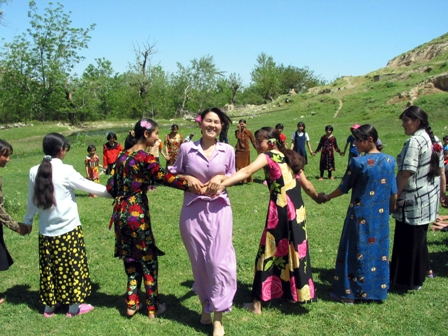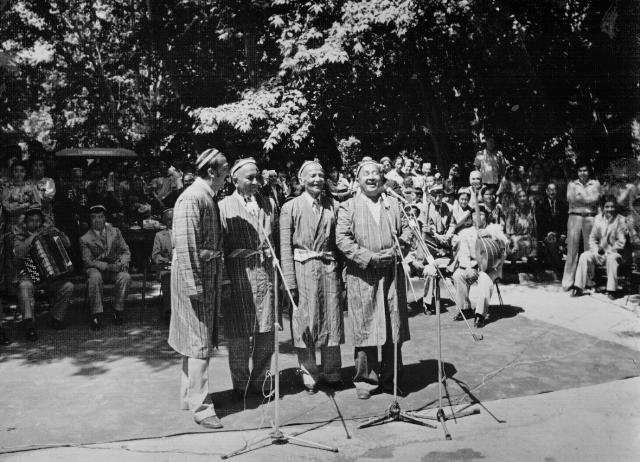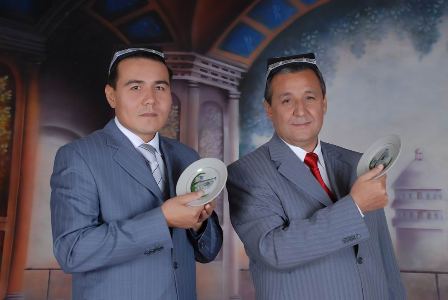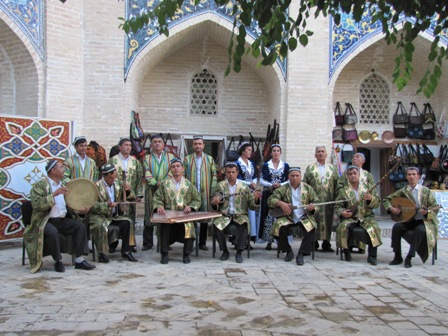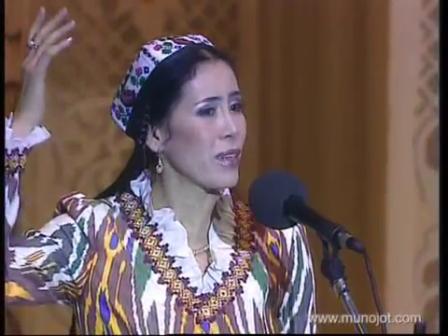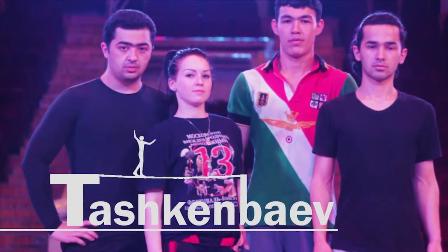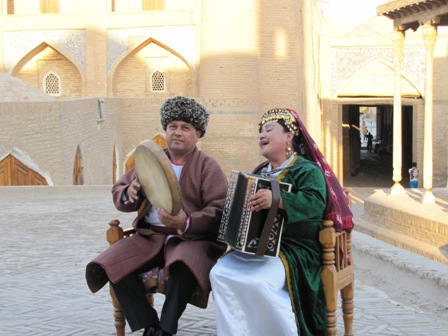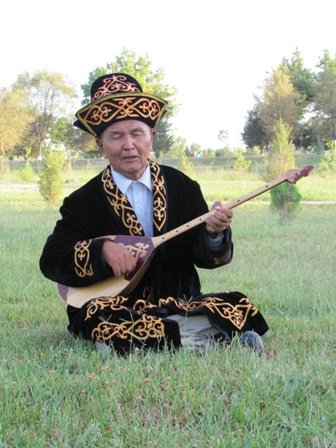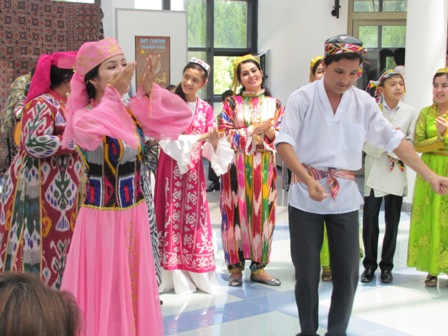Bukhara dances
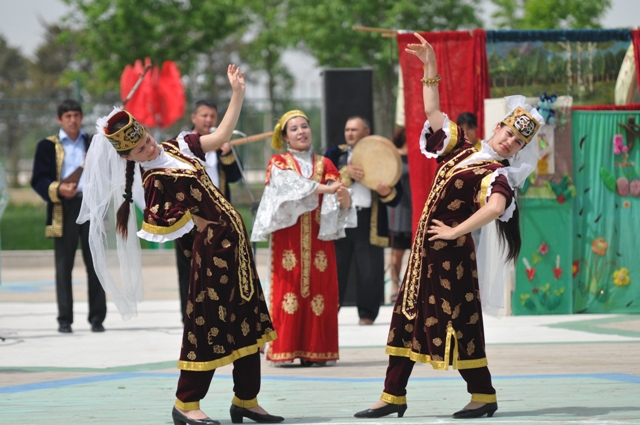
Domain: Performing Arts
Index Number: 02.05.02
Bukhara dance got formed and evolved in the territory of present-day Bukhara region. It is distinguished with its mannishness and swift movements, richness of different outbursts, whirls, rotations, half rotations, stances, handclaps and other elements. The sequence of movements changes depending on the type of dance and the place it is performed.
In Bukhara such women's dances are widespread, in which performers dance without standing on their feet, i.e. on knees. These kinds of dances are called "Zamin bozi" ("The dance of Earth"). Woman-dancer performs it by sitting on her knees and bending her body up and down, then shakes gently her shoulder and with finger touches the ground. Usually Bukhara dances begin from arm movements, i.e. arm dances. Different movements of the body, decorative stances (positions), elements of acrobatics (such as bending like a bridge, circular movement of body, etc.), which smoothly intertwine with other movements make it possible to perform this kind of dance without standing.
The most difficult type of Bukhara dance is called "larzon" (literally – shaking the palms). According to it, women-dancers, who wear different adornments on their body, perform barefooted. The dancer shakes different parts of her body like a fire. Also, each movement has its own name and designation. For example:
• swift falling on the knees and on the ground ("sarizonubozi" – the dance of knees);
• throwing the body back or to different sides ("yelka qoqish" or "ostinbozi" – shaking of shoulders);
• rotation of the body circle-wise ("kajraftor" – circular movements; "sarisinabozi" – the dance of with chest);
• shaking on fingers of feet in standing or sitting position ("kaft larzon" – walking on knees);
• "sinalarzon" – shaking from left to right in semi-sitting position;
• "kulband" – tying together the little fingers;
• "peshanabozi" – the dance of head;
• "domanbozi" – shaking of the hem;
• "kaftafshon" - endless shaking;
• "qars" – a handclap, "qosh qars" – two handclaps;
• "charkh" – a wave-like movement and its versions such as "charkhi dutarafa", "charkhi domon", "charkhi miyon";
• "qadam" – steps and its versions such as "orom qadam", "maqyda qadam", "jumonda", "kashida", "bishkasta", etc.
In Bukhara women usually dance by decorating their feet and hands with bracelets and wearing a corsage with small bells (zang - small bells). These are used during the dance. In addition a woman-dancer always uses qayroq tosh (stone castanets).
At the beginning of the XX century the dances of "Bukhoro boyi-boyi", "Talqin", "Ufori bayot", "Soqiynomai bayot", "Guluzorim bayoti", "Savti sarvinoz" were very popular in performance of such skillful dancers as Rajab Ali, Jorakhon, Ergashcha, Nurillo, Islom Shodi, Khamdamkhon, Mirzakhon, Abdurakhim, Iskandar, Maston and others. Also, some prominent masters of dance such as Kirkigi (M. Khaimova), Chervon-khonim, Isakhar Oqilov, Viloyat Oqilova, Tukhfakhon Pinkhosova, Oliyakhon Khasanova and others made their contribution to the development of Bukhara dance.
At present the traditions associated with Bukhara dance are being preserved and promoted by both professional ensembles (such as "Bukhoro" and "Mavrigi") and amateur folklore and dance collectives.





